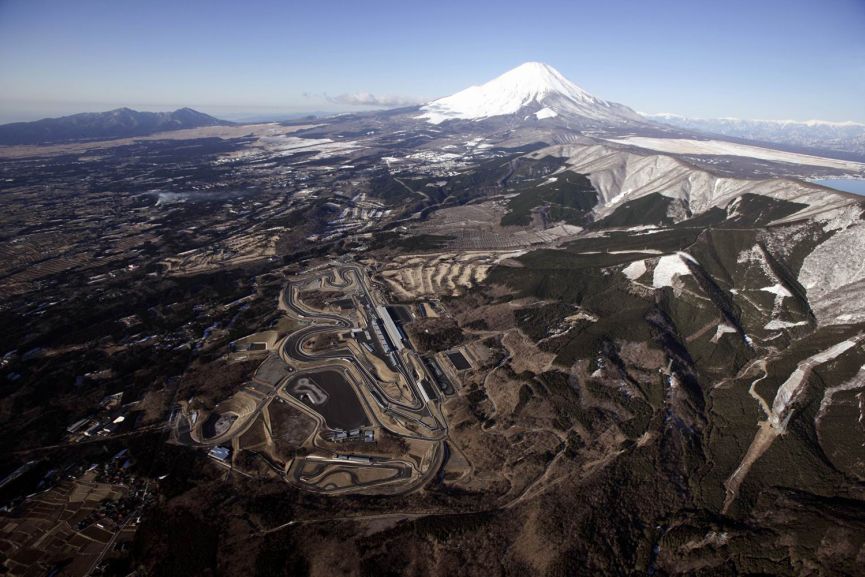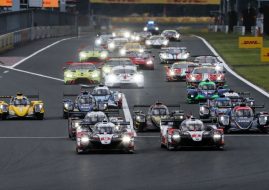Fuji Speedway - One of Three Formula 1 Destinations in Japan
Fuji Speedway is a famous Japanese racing circuit, one of three Japanese tracks which have, in the past, hosted Formula One Grand Prix races. Formula One cars raced at Fuji Speedway four times – two times during the 1970s (in 1976 and 1977) and two times during the 2000s (in 2007 and 2008).
In more than 50 years of existence of the track which stands in the foothills of Mount Fuji at Shizuoka Prefecture, many major racing series like World Sportscar Championship (now World Endurance Championship), Asian Le Mans Series, World Touring Car Championship, and many domestic series like All Japan Sports Prototype Championship, Japanese GT Championship (now Super GT), and Formula Nippon (now Super Formula) were hosted.
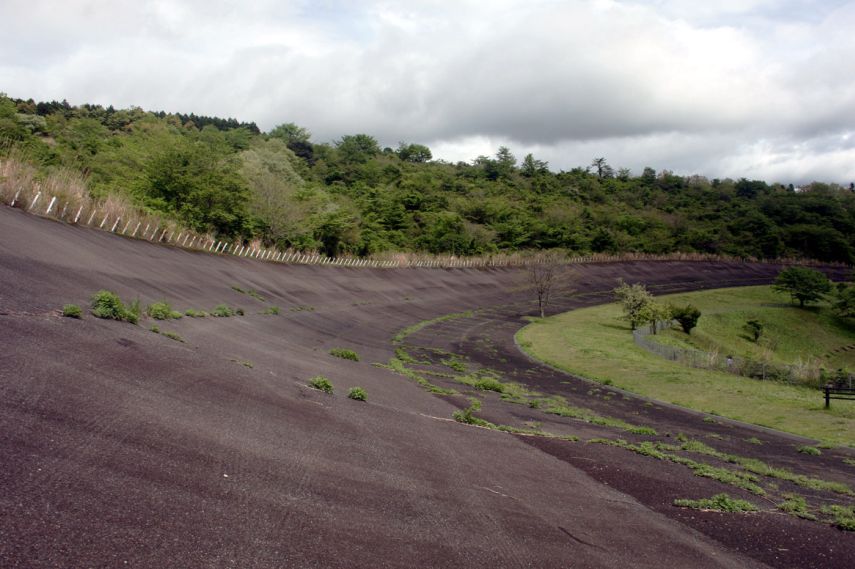
Abandoned 30-degree high bank is a reminder that Fuji supposed to be an American-style speedway
Not enough money to finish the whole circuit
Japan NASCAR Corporation was established in 1963 with the intention to build a 2.5-miles (4 km) high-banked superspeedway, much like some of the famous American speedways. The plan was to organize NASCAR-style races in Japan, but the plan failed in the beginning.
There was not enough money to complete the project, and only one of the bankings was ever designed. The original circuit was 6km long and had 15 turns, with a combination of 30-degree high banked turns and road courses. Fuji Speedway is known for having one of the longest straights out of all motorsport tracks (1475 m long). In 1965, Mitsubishi Estate Co. invested in the circuit and took the management rights. They opened the circuit in December 1965.
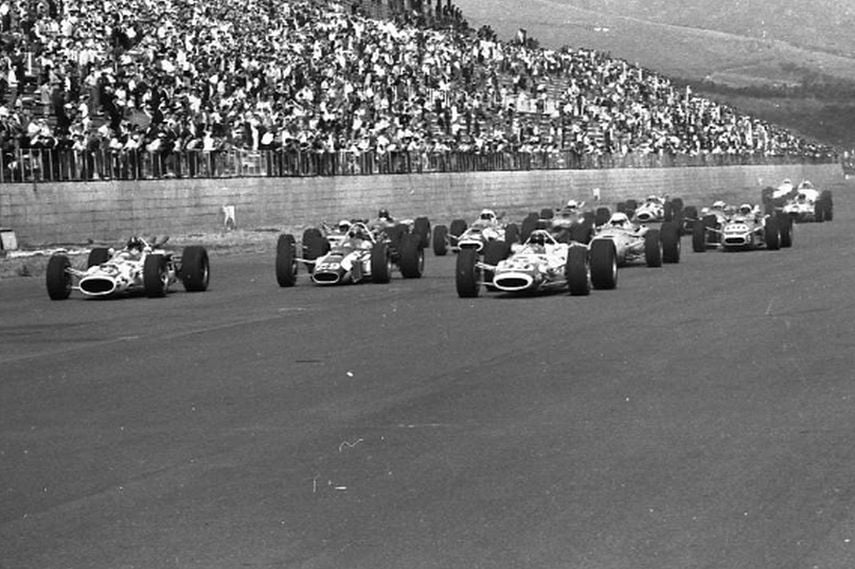
Jackie Stewart was the winner of the USAC non-championship race at Fuji in 1966
Daiichi turn was too dangerous, requiring a change
The track was the venue of various national and international series. On October 9th, 1966, USAC non-championship 200-miles race was held at Fuji Speedway. The winner was Jackie Stewart, ahead of Bobby Unser. Can-Am also visited Fuji in 1968, choosing to run the course in an anti-clockwise direction, possibly to alleviate the dangers of the high-speed entry onto the banking in the normal clockwise racing.
The banked turn, named Daiichi, proved to be very dangerous, and numerous accidents happened there, some even with fatal casualties. After nine years of dangerous driving, the decision for reconstruction was made when two drivers (Hiroshi Kazato and Seiichi Suzuki) got killed, and six other people got injured on June 2nd, 1974. The result of reconstruction was a new 4.36-km long track. The dangerous banking turn was abandoned and five more fast corners were eliminated.
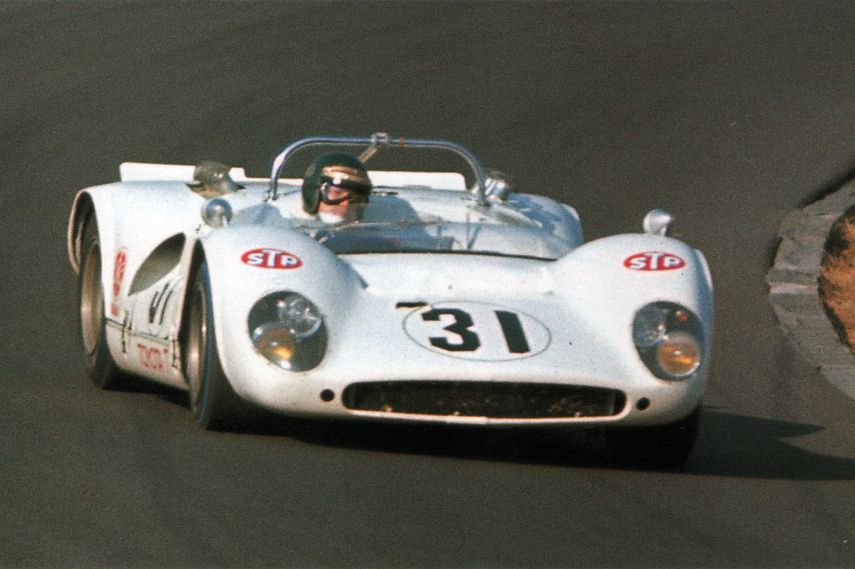
Hiroshi Fushida (pictured in 1968) scored most wins at 1000 km of Fuji
One of the most dramatic races of all time
Since 1967, the major event was 1000 km of Fuji, mainly with Japanese teams and drivers. The most successful driver was Hiroshi Fushida, with five overall victories. Japanese Grand Prix has been held at Fuji since 1966, and some world famous drivers took the wins, such as John Surtees in 1972 and Jacques Laffite in 1976.
At the end of the 1976 season, Formula One Grand Prix was held for the first time at Fuji Speedway. It turned out to be among the most dramatic races of all time. Of course, we are talking about the epic Hunt – Lauda rivalry. Ferrari’s Niki Lauda came to Japan as the championship leader, three points ahead of McLaren’s James Hunt.
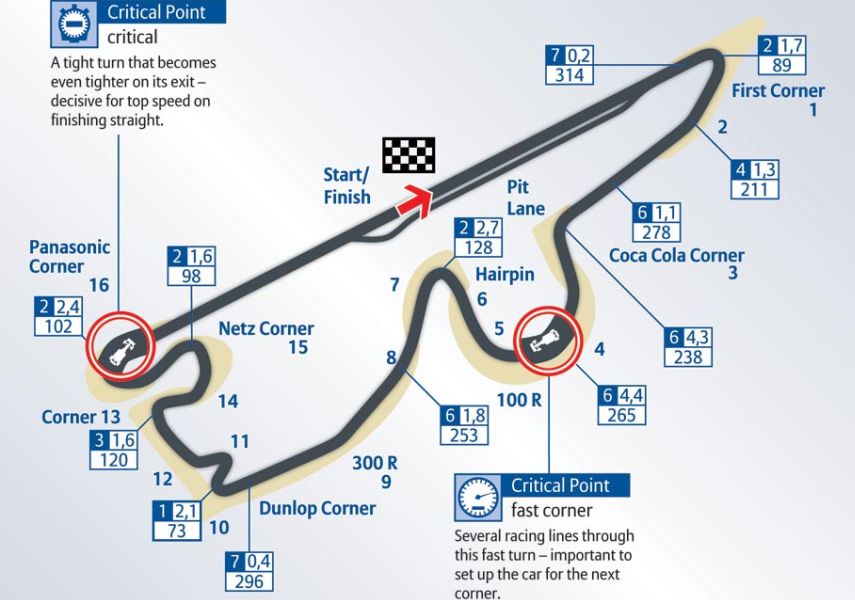
Fuji Speedway track layout
Lauda withdrew, Hunt took the title
The weather conditions were awful, with torrential rain and water running across the track in several places. There were intense debates as to whether the race should be started, and in the end, the organizers decided to go ahead with it. Niki Lauda wasn’t happy with that decisionhe started from third position, but withdrew after just one lap, saying the conditions were too dangerous for racing. Mario Andretti won the race, James Hunt finished third and had won the championship title.
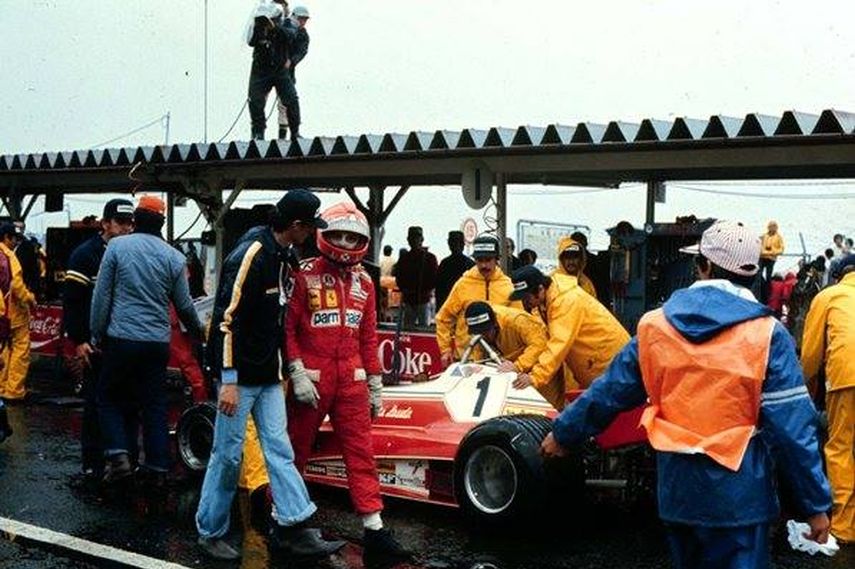
1976 Japanese Grand Prix at Fuji – Niki Lauda withdraws from the race
Two victims in a fatal accident at 1977 Japanese Grand Prix
The 1977 Japanese Grand Prix was, again, the last race of the Formula One season. It wasn’t dramatic regarding results, because Niki Lauda already secured the championship title, but drama came soon after the start with the crash of Gilles Villeneuve and Ronnie Peterson in Lap 5. Debris of crashed cars killed two persons – a marshal and a photographer. They had both been standing in a prohibited area of the track when the accident occurred.
The race winner was McLaren’s James Hunt, ahead of Ferrari’s Carlos Reutemann and Patrick Depailler with six-wheeled Tyrrell P34. In the following year, Formula One wasn’t seen at Fuji, and not even in Japan. The next Japanese Grand Prix was held in 1987 at Suzuka, while Fuji waited until 2007.

Marshal and photographer were killed in a spectacular accident of Villeneuve and Peterson at 1977 Japanese Grand Prix
6 hours of Fuji returned as part of FIA World Endurance Championship
In the meantime, Fuji Speedway continued to be one of the main national circuits with annual visit of World Endurance Championship and World Sports Prototype Championship since 1982. In 1983, All-Japan Sports Prototype Championship was formed. Fuji’s endurance was a part of WEC/WSC until 1988 and part of JSPC until 1992, so the winners were some of the legendary racecars such as Porsche 956, Jaguar XJR-8 and XJR-9, Toyota 89C-V and Nissan R91.
The 1000km race was revived on two occasions, but just as single events. There was an attempt in 1999 to gauge interest in an Asian Le Mans Series, and in 2007, the race was a part of Japan Le Mans Challenge. The last chapter of endurance racing at Fuji was opened in 2012 when 6 Hours of Fuji became part of the new FIA World Endurance Championship. Toyota scored three victories, and in 2015, the Porsche Team was the fastest with Porsche 919 Hybrid.

Toyota scored threee consecutive wins at 6 hour of Fuji from 2012 to 2014
More fatal accidents and new reconstructions
During the years, Fuji’s facilities were starting to become outdated and its safety issue came under the spotlight a few more times, in regard to several fatal accidents. In 1984, a chicane was installed prior to the final corner in order to slow cars onto the straight, while in 1986, the first corner was squared off and tightened, followed the year after by the insertion of a chicane at Suntory.
Pit facilities were upgraded, but by the late 1990s, safety concerns were mounting. A fearsome and fiery crash involving Tetsuya Ota in 1998 JGTC race highlighted inadequacies in marshaling and race organisation at the circuit. Other racer saved Tetsuyahe suffered horrific burns and later successfully sued six race sponsors and promoters, including Fuji Speedway.

The circuit with current layout was opened in 2005
Toyota bought Fuji Speedway and built an ultra-modern track
In October 2000, the Toyota Motor Corporation completed a buy-out of the facility from Mitsubishi and announced plans to redevelop the circuit to Formula One standards. Hermann Tilke was brought to design the track and in 2003, the circuit was closed down for reconstruction.
An ultra-modern track with a 4.563km long circuit was reopened in 2005, and it was time for a Formula One come-back. The new circuit hosted its first Formula One Grand Prix on September 30th, 2007. In circumstances similar to Fuji’s first Grand Prix in 1976, the race was run in heavy rain and mist and the first 19 laps were run under the safety car.
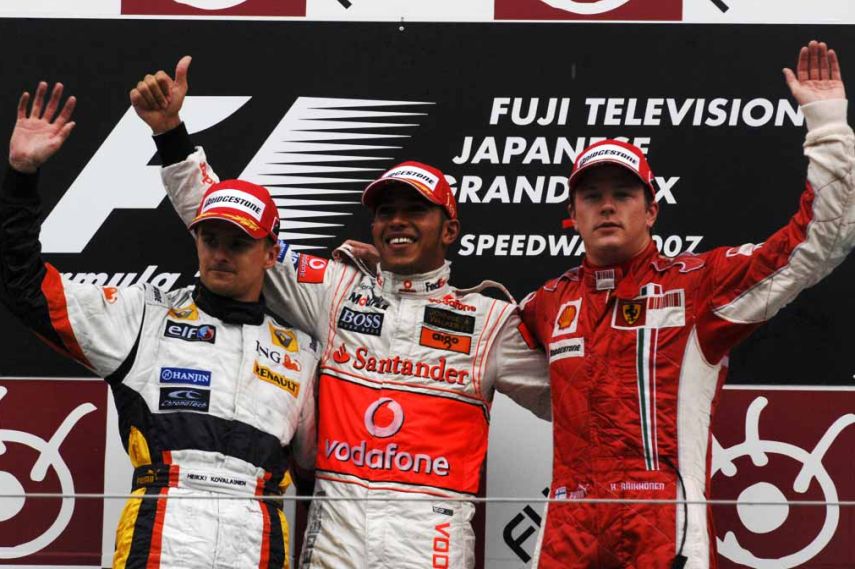
Kovalainen, Hamilton and Raikkonen at the podium of 2007 Japanese Grand Prix
Lewis Hamilton won in 2007
The 2007 Grand Prix was won by McLaren’s Lewis Hamilton, who also took pole position and the fastest lap. Heikki Kovalainen achieved his first podium by finishing second for the Renault team, whilst Kimi Räikkönen finished in third for Ferrari.
The 2007 Japanese Grand Prix was affected by transportation issues, poor facilities including some reserved seats without a view, lack of organization, and too expensive meals sold at the circuit. One of the problems was the prohibition of setting up flags and banners which support teams and drivers, with the Toyota F1 Team whose owner also owned the circuit. All that gave a very bad image to the Fuji circuit and the Japanese Grand Prix.
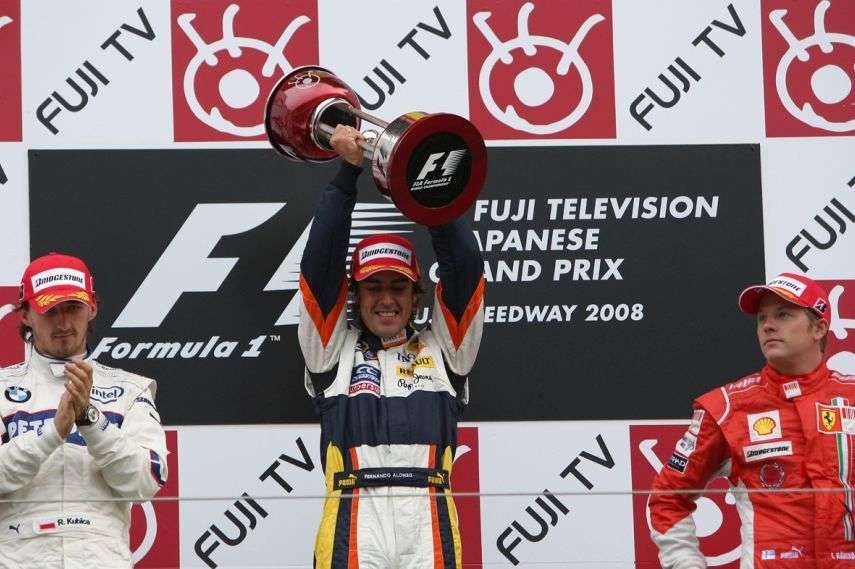
Fernando Alonso won the 2008 Japanese Grand Prix ahead of Robert Kubica and Kimi Raikkonen
Fernando Alonso was the last Grand Prix winner at Fuji in 2008
Formula One circus was back at Fuji one more time on October 12th, 2008. Japanese Grand Prix was the 16th round of the championship. The 67-lap race was won by Fernando Alonso for Renault, Robert Kubica finished second for BMW Sauber, and Kimi Räikkönen finished third for Ferrari.
Following organisational problems, poor ticket and bad weather conditions, it was decided that the Japanese Grand Prix would be shared between Fuji Speedway and Suzuka. Suzuka hosted the 2009 Grand Prix, but Toyota decided to discontinue the hosting of Japanese Grand Prix since 2010 because of global recession and financial losses. For the second time in history, Fuji remained the venue for national events only, until World Endurance Championship came in 2012.
Video : BBC’s story about famous 1976 Japanese Grand Prix at Fuji Speedway
Address: Fuji International Speedway Co.,Ltd., 694 Nakahinata, Oyama-Cho, Sunto-Gun, Shizuoka-Ken 410-1307, JAPAN
Phone: +81 550-78 1234
Official website: fujispeedway.jp
Photos: historicracing.com, motorsportretro.com, silodrome.com, toyota-global.com.


